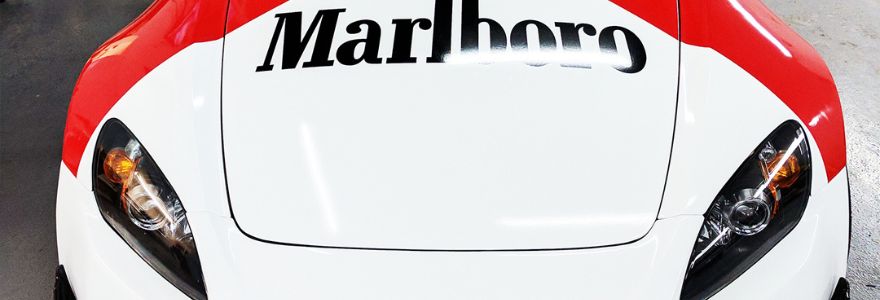So, you’ve wrapped your car. Whether it’s a color change, a custom design, or a business wrap, one thing’s for sure—it looks amazing. But how do you keep it looking that way?
Just like a new paint job or a fresh detail, your wrap needs proper aftercare to maintain its finish, extend its lifespan, and protect your investment. Fortunately, caring for a wrapped vehicle isn’t complicated—it just takes the right approach.
In this guide, we’ll walk you through everything you need to know to keep your wrap looking crisp, clean, and vibrant for years to come.
Why Aftercare Matters
Vinyl wraps are designed to be durable, but they’re not invincible. Environmental factors like UV rays, road salt, grime, bird droppings, and even improper washing can wear down the film over time.
With the right aftercare routine, you’ll:
-
Prolong the life of your wrap (5–7 years or more)
-
Maintain a clean, glossy appearance
-
Avoid peeling, fading, or lifting
-
Protect your resale value or brand image (for commercial vehicles)
In short, taking care of your wrap is the best way to protect your investment.
1. Wait Before Washing – Let It Settle
After your wrap is installed, give it time to cure.
Wait at least 5–7 days before washing your vehicle. This gives the adhesive time to fully bond with the surface and ensures the edges stay sealed.
During this period, avoid:
-
Washing
-
Waxing
-
Rain if possible (a covered garage is ideal)
If your wrap gets dirty during the cure period, a gentle wipe with a clean microfiber cloth will do the trick.
2. Hand Wash Only – No Brushes, Please
The safest way to clean your wrapped vehicle is by hand. Avoid automatic car washes—especially ones with spinning brushes—as they can scratch, peel, or lift the wrap at the edges.
How to Wash a Wrapped Vehicle:
-
Use a pH-balanced automotive soap (not dish soap)
-
Wash with a clean microfiber mitt or soft sponge
-
Rinse with low-pressure water
-
Dry with a microfiber towel (don’t air dry—it can leave spots)
Pro Tip: Wash your vehicle once every 1–2 weeks, or sooner if it’s exposed to dirt, salt, or bugs.
3. Spot-Clean Contaminants Immediately
Vinyl is more porous than paint, so it’s important to clean off contaminants quickly before they stain or damage the film.
Watch out for:
-
Bird droppings
-
Tree sap
-
Bug splatter
-
Fuel spills
-
Brake dust buildup (especially on lower panels)
Use a wrap-safe detail spray or isopropyl alcohol diluted with water to gently remove the residue without scrubbing.
4. Avoid High-Pressure Washing
Yes, you can use a pressure washer—but with caution.
If you must pressure wash:
-
Keep the nozzle at least 12 inches away from the surface
-
Use a wide-angle spray (no direct, sharp jets)
-
Avoid edges, seams, and lifting points
-
Don’t exceed 2,000 PSI
When in doubt, stick to a garden hose and soft mitt.
5. Skip the Wax—Use Wrap-Safe Sealants
Traditional waxes and polishes aren’t ideal for vinyl and can leave behind cloudy residue or damage matte and satin finishes.
Instead, use a wrap-safe spray sealant or ceramic coating made specifically for vinyl surfaces. These products enhance gloss, add a protective layer, and make future cleaning easier.
6. Protect Against the Sun
UV rays are a vinyl wrap’s worst enemy. Over time, constant exposure to sunlight can cause fading, drying, and cracking.
To reduce sun damage:
-
Park in shaded areas or garages when possible
-
Use a car cover for long-term outdoor storage
-
Consider a ceramic coating for extra UV protection
This is especially important if your wrap features bold colors, printed graphics, or custom designs that can fade faster.
7. Be Gentle With Matte and Satin Finishes
Matte and satin wraps need extra care—they don’t like oils, fingerprints, or glossy detailing products.
For these finishes:
-
Never use wax or polish
-
Use only matte-safe soaps and sealants
-
Avoid touching the surface with greasy hands
-
Spot-clean fingerprints as soon as they appear
The goal is to preserve the unique flat finish without introducing unwanted shine.
8. Schedule Professional Inspections
Once or twice a year, it’s a good idea to have your wrap professionally inspected. An expert can check for:
-
Lifting edges or seams
-
Fading or discoloration
-
Water or chemical spots
-
Minor repairs before they become big problems
If your vehicle has a commercial or full-body wrap, inspections are especially important to keep your branding sharp and consistent.
9. Wrap Removal: Don’t DIY It
Wraps are designed to be removable, but that doesn’t mean you should do it yourself—especially after years of exposure to sun and weather.
When it’s time to remove your wrap:
-
Let a professional handle the job to avoid damaging the paint
-
Make sure all adhesive residue is properly cleaned
-
Consider replacing or upgrading to a new wrap for continued protection
Final Thoughts
A vinyl wrap is one of the best ways to transform and protect your vehicle—but only if you take care of it. With the right aftercare routine, your wrap will look fresh, feel smooth, and turn heads for years to come.
Just remember: wash gently, avoid harsh chemicals, stay out of the sun when you can, and don’t skip the maintenance.


